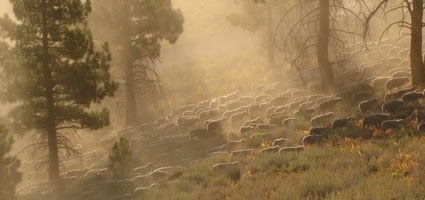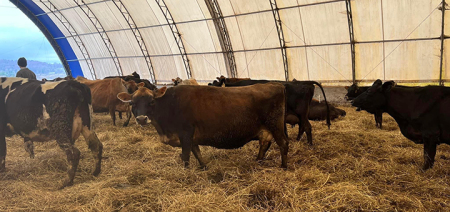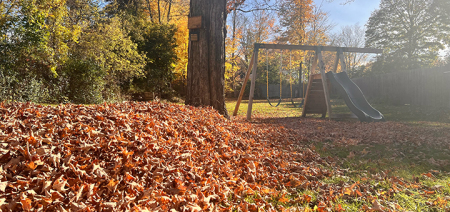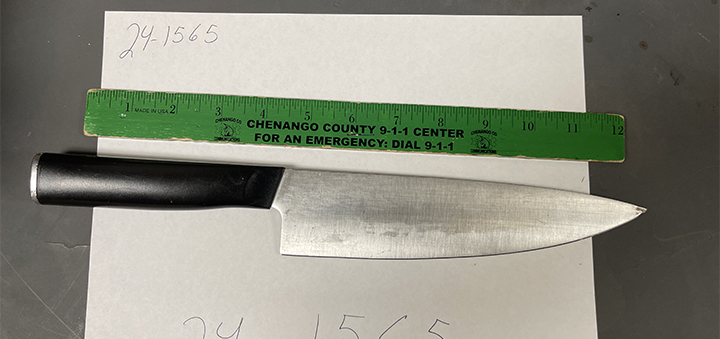Off The Map, Week12: Dust, Smoke And Steam
Published:
September 20th, 2010
By:
Bryan Snyder

With the coming of sunrise over Long Valley, one might expect to be greeted with fresh, crisp breezes and gentle birdsong, especially from an isolated campsite perched one thousand feet above the valley floor. Instead, my morning was heralded by the arrival of sheep. Lots of them. I crawled out from my tent to investigate the disturbance and found five hundred sheep bleating out a wearied protest as they were herded through the forest below me.
These were not native bighorn sheep… they were the white and fluffy domesticated type, with an occasional black sheep thrown into the mix. I could see sheepdogs darting about, nosing their wool-clad charges along whenever the animals stopped to browse the sagebrush. From somewhere nearby, a herd of cows bellowed in sympathy.
The impact of two thousand hooves crushed pine needles into dust and kicked up the dry, powdery soil, creating the perfect medium for sunrise sunrays. As I watched the creatures rippling through a landscape of sepia-toned shadows, I felt a sense of timelessness, as if the world’s clock had been set back one century and the days of the Western Frontier had returned once again to California.
Since my consciousness had been stirred along with all the dust, I decided to make an early start and drive off towards the town of Mammoth Lakes, where my first foray into the Sierras this year would begin. My momentum seemed encouraging at first, but it stalled as soon as I encountered the woolly horde of sheep, which were now backed up bumper-to-bumper for a quarter-mile along the road leading towards the highway. Attempts to roll my vehicle forward and part the sea of ruminants proved fruitless until a Basque shepherd finally showed some mercy. His used his team of sheepdogs to open up a corridor, and I slipped free, escaping at last from the foothills of the Sierra Nevada.
The famous naturalist John Muir called the Sierras the “Range of Light”, although the wilderness through which I had chosen to hike contained none of the white granite cathedral spires typically featured on the cover of Ansel Adams calendars. Instead, the mountains south of Mammoth Lakes bore striped patterns in regal shades of red and gray. Ponds and pine forests filled the level spaces, and after two weeks in the desert, it felt revitalizing to have the color green restored to nature’s palate.
Along the trail to Duck Pass, the sound of my footsteps would frequently trigger the persistent chipping of perturbed squirrels and the pity-inducing cry of the Clark’s Nutcracker. The Nutcracker, with its gray body and black-and-white wings and tail, is a more purposeful relative of the crow that I witnessed tapping at the cones of the limber pine like a woodpecker in order to open the scales and obtain the seeds within. These seeds are stored by the birds in as many as 2500 different caches beneath the soil, and any uneaten seeds germinate to become new limber pine trees, perpetuating the Nutcracker’s own habitat.
My plan to cut from Duck Pass to Deer Lakes on an unofficial trail proved mostly successful, apart from a disturbing descent down a hillside of sparkling green boulders. The rocks here were dreadfully unsettled and seemed to be waiting for the moment when my weight would tip the balance and set off a bone-crushing landslide. Twice, I froze in place as I heard and felt the rocks shifting underneath the surface, moving like the hidden tumblers on a combination lock and striving to align in an arrangement that would set everything loose. There was no solid ground onto which I could jump for safety; I just had to hope that the booby trap would fail to go off. I hate being unable to control the odds, especially when my life is at stake.
After negotiating the treacherous slope, I could finally appreciate the scenery that had opened up to the west. The high Sierra peaks looked to have been scraped, gouged and chewed every which way, then smoothed over by a millennium of rainfall. Smoke from a small forest fire in the Cascade Valley played the part of the primordial mists, making a relatively young mountain range seem much more ancient.
To the east of Mammoth Lakes in the center of Long Valley lies a dense concentration of hot springs that frequent soakers refer to as the “Mother Lode of the Sierras”, and it was there that I retired after the long day’s journey. I found one of the pools called Crowley Hot Spring just before dusk made negotiating the labyrinth of dirt roads problematic.
The warm water was glorious and, like the other attractions of the day, it was free of charge. Snowmelt from the Sierras trickles down several miles beneath the earth, where hot rock near magma chambers superheats the water and sends it back up through fractures to the surface. Treasures such as these are usually snatched up and commoditized, but the pools along Hot Creek are available to anyone, if you know how to find them.
Once night had fallen, the steam from the hot springs seemed to merge with the cosmic dust trails of the Milky Way, creating an unending arc of mist that spanned from earth to the heavens. The constellations of Scorpio and Aries seemed to rise straight out of the waters, and as the surface of the pool calmed and the ripples settled, the stars in the sky and those reflected in the pool seemed to be no different. Just shimmering points on the same celestial tapestry, uniting the world of earthbound sheep and men with the realms of winged travelers, and gently enfolding us within the mists of creation.
Bryan is a 1991 Norwich High School graduate and works as a naturalist at the Rancho Alegre Outdoor School in Santa Barbara, CA. You may reach him mid-journey at foolsby@hotmail.com. Look for Bryan’s columns on our Facebook page – www.facebook.com/theeveningsun.
Author: Bryan Snyder - More From This Author
Comments





(1).jpg)

